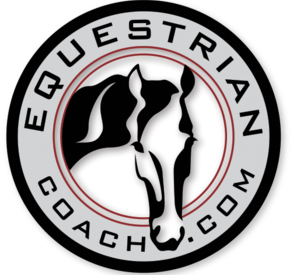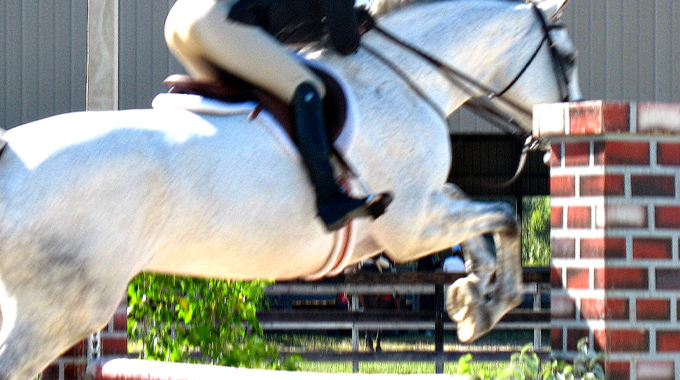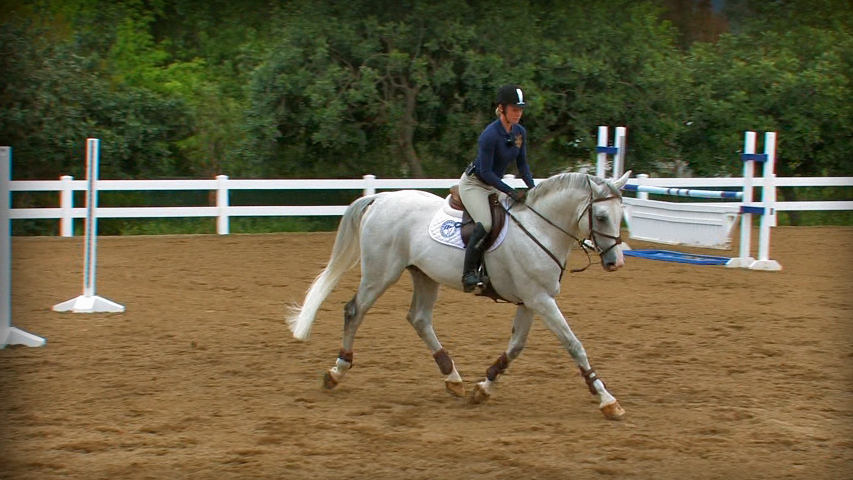Geoff Teall
- 09 Feb, 2017
- 0 Comments
- 4 Mins Read
How To Stop Pushing Your Leg Forward Over The Jumps
Submitted by member: Jennifer
When jumping, I’ve gotten into a bad habit of throwing my leg forward and coming back to the saddle too soon upon landing. Any advice on how I can stop this habit is greatly appreciated. Thanks!
Answer by Geoff Teall
I have found over time that any problems that seem to come up are best dealt with by going back and working on simple exercises to build better habits. The further back you go, the simpler the exercise. And the more slowly you try to progress, the better the eventual outcome. The important thing to remember here is that any time you are on a horse, you are either practicing good habits or bad habits—so be very careful and very patient.
I think there are two essential elements to correct your habit of throwing your leg forward over the jump and falling back. The first is step is to come up with as many exercises as possible to correct and strengthen your position. The second step is to really understand and take the time to adjust your position the minute it starts to slip. Adjusting your position should take place at whatever gait you are most comfortable with and the most apt to be accurate, even if this means standing still.
I think the best thing you can do is to go back to the best basic exercise for position on the flat, which is the two-point position. This exercise will not only help you get the proper leg position you will need to be secure on the horse, but it will also help you to learn to maintain your balance in the middle of the horse, or over the horse’s center of balance. It is very important in your two-point that your legs are back, down, and in. This means that your knee is slightly bent to allow your leg back and underneath you for balance, your ankle is bent with your heel down to allow you down and around your horse for the longest leg possible, and your leg is in, or tight, once it is back and down. Back, down, and in. As you work in your two-point in the beginning, hold the mane, or press down on the neck of the horse to help you balance. As you improve and become stronger you should be able to hold your balance through your leg and your base, have light contact with the mouth of the horse, and not rely on that contact for balance at all. Once you have this mastered on the flat, then move on to using your two-point over rails and low fences. Also remember that if your hip angle is closed so that you are about 30 degrees inside the vertical, you will need to also use the small of your back to help yourself to maintain your balance. Be very careful that you are not using your thigh or pinching with your knees to hold your leg still. Either of these two things prevent your leg from stretching down, so they actually give you a false sense of security, while at the same time make it more difficult for you to control your leg and your balance.
The other great exercise is always no stirrup work. I would start with slow work without your irons: walk, sitting trot, and canter. These three gaits allow you to sit the saddle, which in turn allows you to stretch your leg down and make it long. The natural inclinations when you go to the sitting trot and the canter will be to pull your legs up. Again, if this happens, take the time to stop, go to the gait in which you are the most comfortable, and secure and adjust your position. Practice good habits, not bad. Also important, again, is to be sure you are not gripping with your thigh or pinching with your knee, as these two mistakes will not allow your leg down and around the horse. Toes slightly out and a relaxed knee will help prevent this gripping and pinching.
When you are comfortable with your slow work without stirrups, it is time to move on to your fast work: posting trot, gallop, and jumping. In this work, you will shorten your leg to the position you would use if you had stirrups. It is designed to make your leg strong. Again be very careful not to grip with your thigh or pinch with your knee, but instead distribute your weight and contact through your whole leg.
Combing these two exercises, and taking enough time to build good habits, should help you correct your problem with your leg over fences. Be careful to take enough time, and get some good help to speed the process along.
For another post on leg position, check out Bernie Traurig’s blog: “Stop Your Leg From Swinging on Your Horse”
Video Recommendation:
Building Blocks to a Great Position: Part 1
Bernie Traurig
In Part 1 of Building Blocks to a Great Position, Bernie Traurig starts with proper leg position as a basis for a solid foundation in the tack. With demonstrations by his daughter, Natasha, this video outlines exercises that enhance proper techniques.
Running Time: 19 minutes and 57 seconds
Balance in the Stirrups: The Half-Seat
Bernie Traurig
The Half-Seat is the cornerstone of the American Forward Riding System. In this topic Bernie reiterates just how essential it is to perfect this position.
Running Time: 7 minutes and 58 seconds
Have Something You Want to Ask Our Panel of Experts?
Ask The Experts is the ultimate way to get help from the top professionals in the equestrian industry without leaving the comfort of your home. This service is available to Monthly, Annual and Lifetime Members of EquestrianCoach.com.



